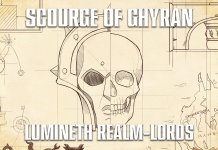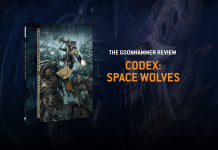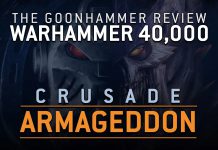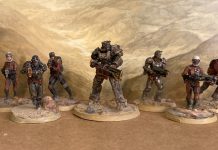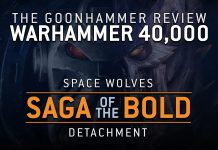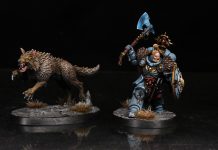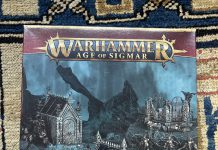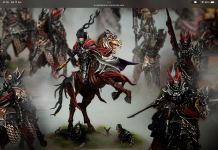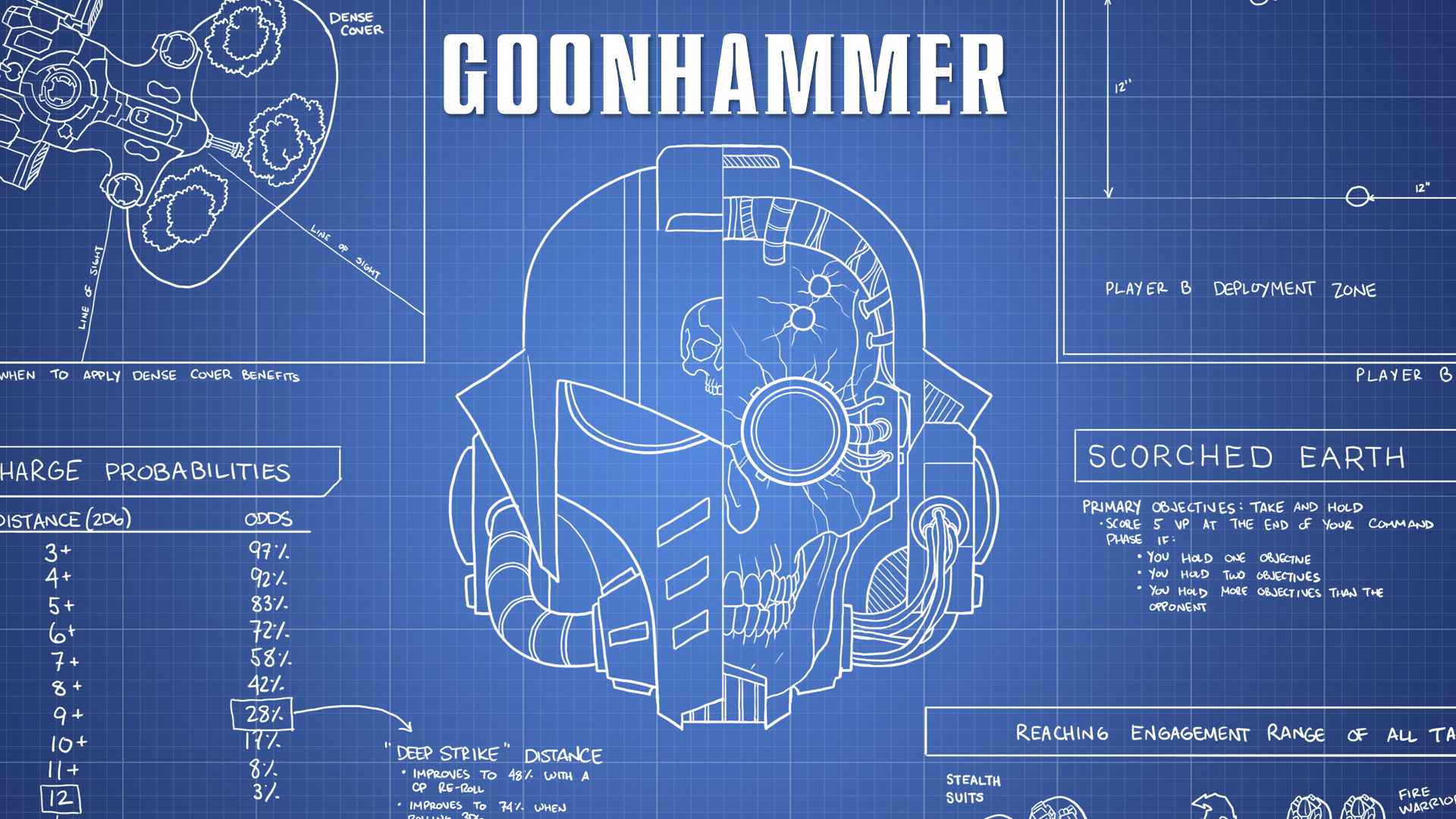With the 10th edition of Warhammer 40,000 arriving in a couple of months, we thought that it’d be a good idea to start talking about and collating all the changes shown off by Warhammer Community. This will be a weekly article going over abilities, rules, factions and anything else that seems interesting, but this one will be a bit longer than normal, since there was a lot of content shown over the last couple of weeks, and a little event called Warhammer Fest as well.
We’ll also be adding commentary of our own to this, where appropriate, as we’re loathe to just repost previews with nothing added.
Datasheets and General Stats
Datasheets have been completely overhauled in 10th, with all units now fitting rather comfortably onto an AoS-style datacard.
The most striking change is that Weapon/Ballistic Skill, Strength and Attacks are all gone. In a similar fashion to Kill Team, these have now all been rolled into the unit’s weapon(s), where each weapon has an attack value, a to hit value, strength and damage. This means that the same weapon might have a different profile for different units, as their attacks, strength, and hit rolls may be different. The knock-on effect here is that most of the benefits of having a unit champion are likely to disappear – the Faction Focus for Chaos Space Marines and Space Marines showed off the datacard for Legionaries with no sign of a bonus attack for the squad’s Aspiring Champion. That said, this may come into play for units where only a single model (the champion) can have an option for a certain weapon such as a power fist (it’s possible we may see an extra attack on that weapon we don’t expect).
Leadership has gone from a number you roll under to a number you have to beat on a roll of 2D6. This will be used for Battle-shock and Leadership tests.
The final major change is every unit now has a value for controlling Objectives, which is called OC. To determine who controls an objective, add up the OC of every model contesting it, and the player with the highest value wins. This replaces both the Objective Secured rule from 9th edition as well as those rules which made models count as a larger number – now War Dogs can just have OC 5 instead of having a rule which causes them to count as 5 models for objective control purposes.
On a slightly more minor level, separate profiles for wounds suffered have been removed, giving way to a single change which happens when a model is at a certain number of wounds, and so far the change we’ve seen is vehicle units getting -1 to hit, but there may be other effects.
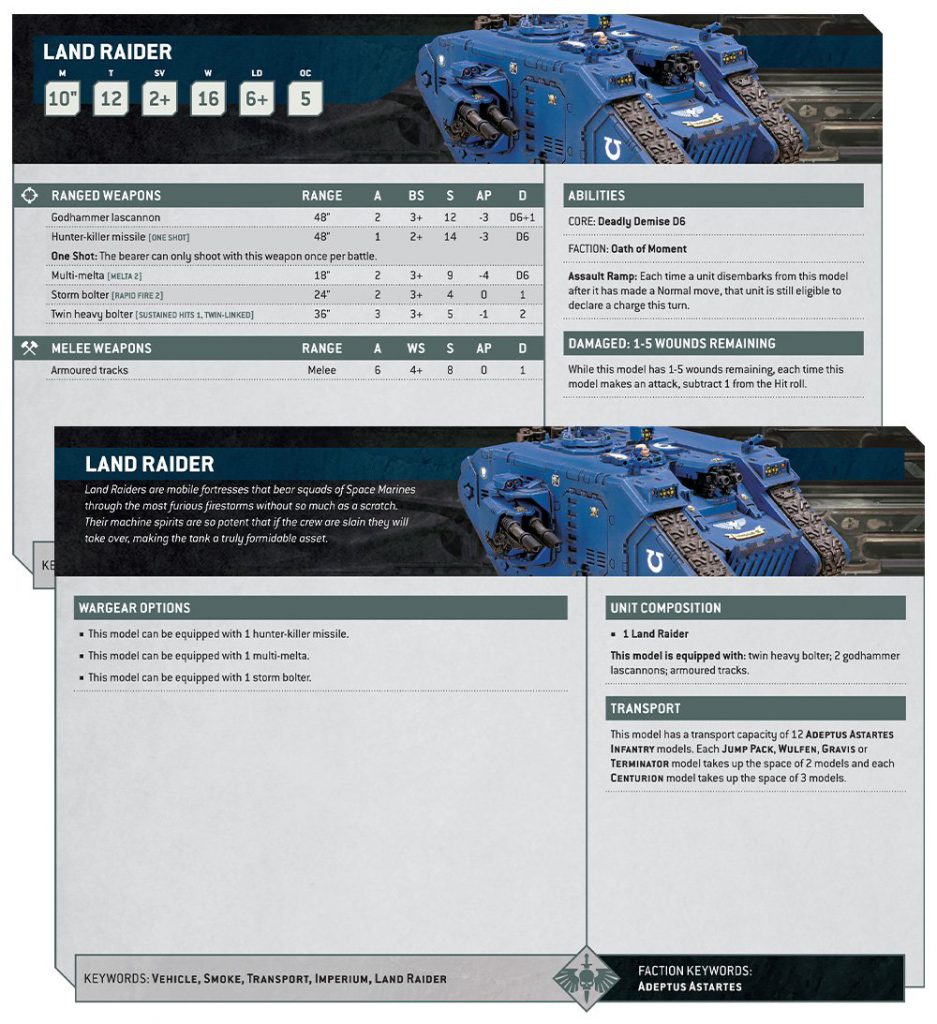
As for the layout of the cards themselves. The front of the card contains unit stats, abilities, weapon loadouts and special rules, while the back contains weapon options, transport capacity and general unit construction rules. Generally you’ll just be using the front of your card once the game begins, and the back of the card is for pre-game actions and list building.
Vehicle and Monster Rules
Vehicles and Monsters appear to be largely unchanged so far, with the two changes being a general lack of profile degradation (instead there just being one penalty inflicted at roughly 30% of their starting wounds), and generally increased toughness.
Exploding on Death is now a rule called Deadly Demise X, where on destruction, on a roll of a 6, that unit deals X mortal wounds to all nearby units. This can also be variable, as with the Land Raider (shown above) having Deadly Demise D6. Presumably this will also go on things like Tyranid Monsters.
On the other hand, transports have received some subtle but major changes. The first of these is Firing Deck X, which basically means: In the shooting phase, pick one ranged weapon from X models inside the transport, the transport is counted as being armed with those weapons during the shooting phase. In practical terms, this means that anything that affects the transport (positive or negative!) affects the units firing out of it as well. Also Battlewagons have Firing Deck 22, which is just hilarious. This is a great way to reconcile the mess which was Open-topped vehicles in 9th, and makes it much more clear how the rules for those guns firing works.
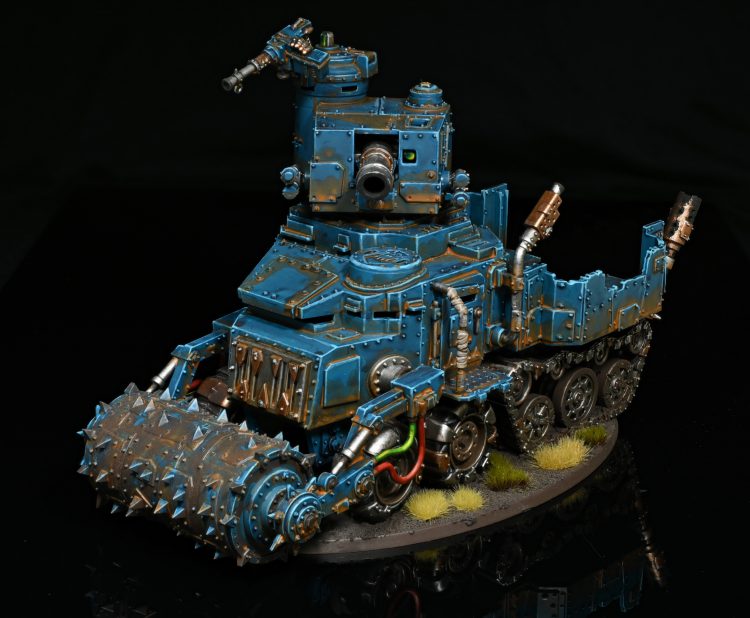
Secondly, but no less potent, troops can disembark from a transport after it moves normally (not advancing or falling back), and they can shoot (but not charge). There’s also been unique rules shown for Tauroxes and Land Raiders that let them circumvent part of the new restrictions here. The only major restriction still in play is that troops can’t embark and disembark on the same turn. This is a huge change which makes Land Raiders at the very least immediately useful – Barreling forward 10″ with a unit of Terminators, who then disembark, move, shoot, and charge makes the Terminators in a Land Raider option once again very real. Land Raiders are back, baby!
So far we’ve also seen increased transport capacity for transports, such as with the Land Raider going from 10 to 12. That’s most likely because of the new Character rules, which have characters joining units once again. On that note…
Character Rules
Swiftblade: So this is a big shakeup from 9th edition right off the bat. While the days of characters running around the table on their own aren’t quite gone, it looks like many character models won’t be doing that anymore. In 10th, many characters will have the Leader ability, which allows them to directly join a squad. You can’t just join any squad with this rule; different models will have different eligible units they are allowed to join. But when a leader does join a squad, they can apply buffs to that squad as well as use that squad for protection until the squad is removed.
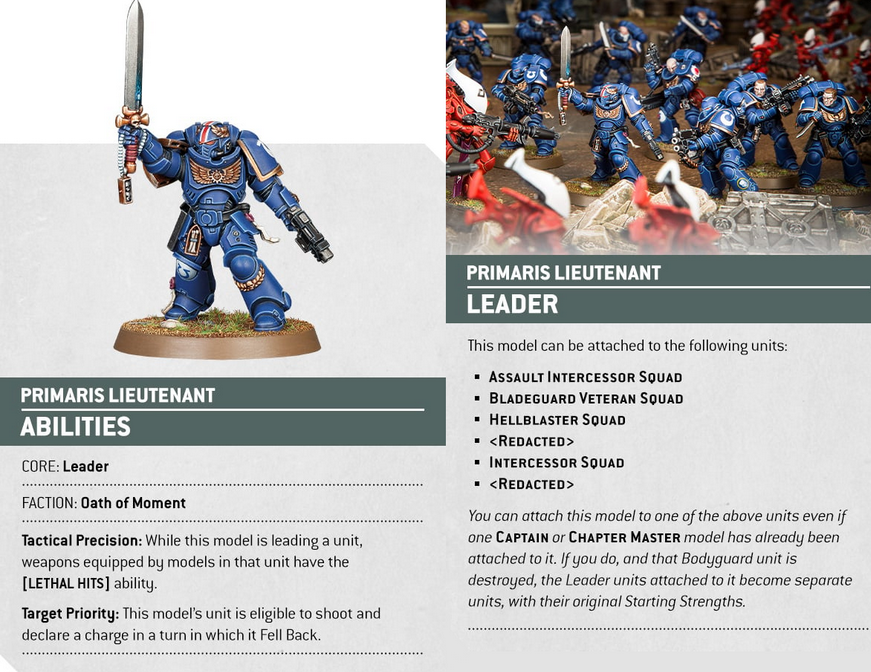
We see an example of this with the Space Marine Lieutenant in the Warcom article, who can join a squad and provide the unit with the ability to fall back and shoot as well as shoot and charge when the Lieutenant’s unit falls back as well as giving their weapons Lethal Hits. The Space Marine Lieutenant is also a rare breed of character who can join a squad that already has a character in it, which is interesting and implies that some other minor characters may also be able to do this. This also explains why you might need to put 12 power-armored guys into a Repulsor, since that unit might have a Captain and a Lieutenant joined to it.
For folks who’ve been around a while, this feels very similar to the Independent Character rule from previous editions of 40K. Fortunately the article does imply that we can’t allocate wounds to characters before the squad unless a special ability can target a character directly, so we can dodge the death star problem of allocating wounds to a super tough character before allocating to the squad. Crisis Averted. Though we suspect that there will be rules that allow for this, since Snipers aren’t going anywhere.
We have seen some characters who can go out on their own, and some auras, but it looks like the plan for 10th is to largely make characters force multipliers for the units they’re a part of, not multiple units with an aura. It also likely means that cheap smash captain characters used as trade pieces won’t be as common either.
While less smash captains makes my rock and roll close combat heart sad, the changes here to characters is a good thing. Oftentimes, overlapping aura abilities from powerful characters led to 9th and 8th’s most egregious combos that could supercharge lethality. While buff characters are here to stay I’m personally breathing a sigh of relief with the new Leader rules.
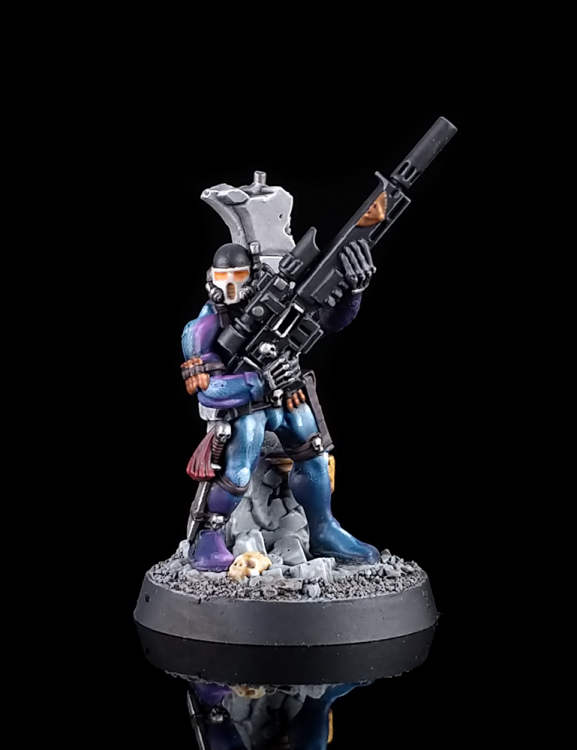
Finally, there’s the addition of the Lone Operative ability. This prevents the character being targeted by ranged attacks unless the attacking unit is within 12” of them. Some characters can conditionally receive this ability by being near certain units, while others receive it naturally.
Terrain Rules
Terrain rules have thankfully been massively streamlined. Everything from the last edition has essentially gone and terrain generally just grants a bonus called Benefit of Cover. If a model with the Benefit of Cover is hit by a ranged attack, add 1 to their armour save. The sole exception to this is if the attack has an Armour Penetration value of 0 and the save of the defending model is 3+ or better, so we can sidestep the nightmare of units with a 2+ save sitting in cover, ignoring all incoming firepower.

| Type of Terrain | How to get Benefit of Cover | Extra Rules |
| Craters and Rubble | Be an INFANTRY model wholly on top of the terrain feature. | |
| Barricades and Fuel Pipes | Be an INFANTRY model within 3″ of the terrain feature and not fully visible to every model in the attacking unit. | A unit counts as making a successful charge, and is eligible to fight if within 2″ of an enemy, assuming this terrain is separating them and the enemy models. |
| Debris | Be not fully visible to every model in the attacking unit due to the terrain piece. | |
| Hills and Sealed Structures | Be not fully visible to every model in the attacking unit due to the terrain piece. | |
| Woods | Be either wholly within this terrain feature, or not fully visible due to this terrain feature. | If an attacking unit has to draw line of sight through this terrain piece, the unit being attacked does not count as fully visible. |
| Ruins | Be either wholly within this terrain feature or not visible to every model in the attacking unit due to this terrain feature. | If a model is wholly within this terrain feature and more than 6″ above ground level, then if they target a unit with a ranged attack, where every model is on ground level. Improve the Armor Penetration of those attacks by 1.
Ruins also block visibility of all units through their footprint. However units inside or outside of them can shoot out of and into them. |
Swiftblade: Generally, it looks like cover will be easier to get in this new edition. Debris granting cover by blocking visibility to the unit is something I really like, as not adding pieces of scatter terrain to the board actually has some important gameplay impact rather than just fluffing things up. It also looks like we are discarding the idea of dense cover from ninth edition, so getting cover is just an armor save increase. These new terrain rules also clean up a handful of unintuitive terrain interactions from ninth, such as toeing into a forest with a tank to get dense cover.
It’s a nice cleanup, and I think we will see more terrain and terrain rules when the big release comes. This is a good start though, probably one of the best examples we’ve seen so far of the design ethos of “simplified, not simple”.
TheChirurgeon: To an extent, at least – having to be wholly within is a big deal for some units, and will make things tougher in some ways, though that obscured visibility rule will likely make things a bit easier for larger units.
Abilities
We haven’t seen many unit abilities yet that are tied to a USR as opposed to a fully explained special rule. The two we’ve seen so far are Scouts X”, which allows a unit to make an X-inch move after deployment and Feel No Pain, which ignores wounds inflicted on the model or unit.
In comparison though, weapons now get a lot of USRs. Let’s take a look.
Weapon Rules
Weapon Types have been lightly overhauled in 10th Edition. ASSAULT weapons can be shot, without penalty, if the bearer advances. RAPID FIRE weapons gain a bonus to the number of shots fired, equal to the characteristic of the weapon, if the target is within half-range and HEAVY weapons now just give +1 to Hit if the bearer stands still. There’s no penalty for moving and firing. PISTOL weapons have been shown, but it hasn’t been explained what they do just yet.
Critical Rolls
There are several weapon traits that are centred around rolling unmodified 6s to hit and to wound, which are called CRITICAL HITS and CRITICAL WOUNDS respectively. We just did a Hammer of Math round some of these effects today – you can check that out here.
- SUSTAINED HITS X cause each CRITICAL HIT to cause a number of extra hits equal to the number of the characteristic.
- LETHAL HITS cause CRITICAL HITS to automatically wound.
- DEVASTATING WOUNDS cause each CRITICAL WOUND to deal a number of mortal wounds equal to the damage characteristic of the weapon, where the attack sequence then ends.
Other Weapon Rules
Tying into Critical Rolls are the ANTI-KEYWORD X rules. If a weapon is fired against a target that has that keyword (VEHICLE, MONSTER, INFANTRY etc), an unmodified wound roll of X counts as a CRITICAL WOUND.
Other rules include HAZARDOUS, which either kill or deal mortal wounds to their bearer on a hit roll of 1 (expect to see this on plasma guns and the like). ONE SHOT, which means the weapon can only be used once a battle.

More positive keywords are MELTA X, which increases the damage of the weapon by X if targeting a unit within half-range. TWIN LINKED, which allows the bearer to re-roll wound rolls, as opposed to giving you two of the same weapon. TORRENT, which causes all hits with that weapon to automatically hit, which looks like it’s being used for weapons such as flamers. There’s also BLAST, which was explained at Warhammer Fest, which gives +1 attack to a weapon for every 5 models in the unit it’s targeting.
Another keyword that’s shown up is PSYCHIC, which ties rather nicely into what they’ve done to phases, most notably the Psychic Phase.
Phase Changes
There’s been two major changes to the phases in a turn of 40K. Firstly and of varying importance (depending on what faction you play) is the change to the Psychic Phase. The change is that it no longer exists; instead psychic powers look like they’ve been rolled into unit abilities and are used in the relevant phase. So the more damage focused Psychic Powers are used in the Shooting phase, while something like Da Jump is used in the Movement Phase. I’m completely fine with this as an Eldar player, also not having to look at a bunch of Psychic Power cards or constantly go to the Psychic pages of the book is a major bonus. TheChirurgeon: I am also fine with this as a Thousand Sons player.
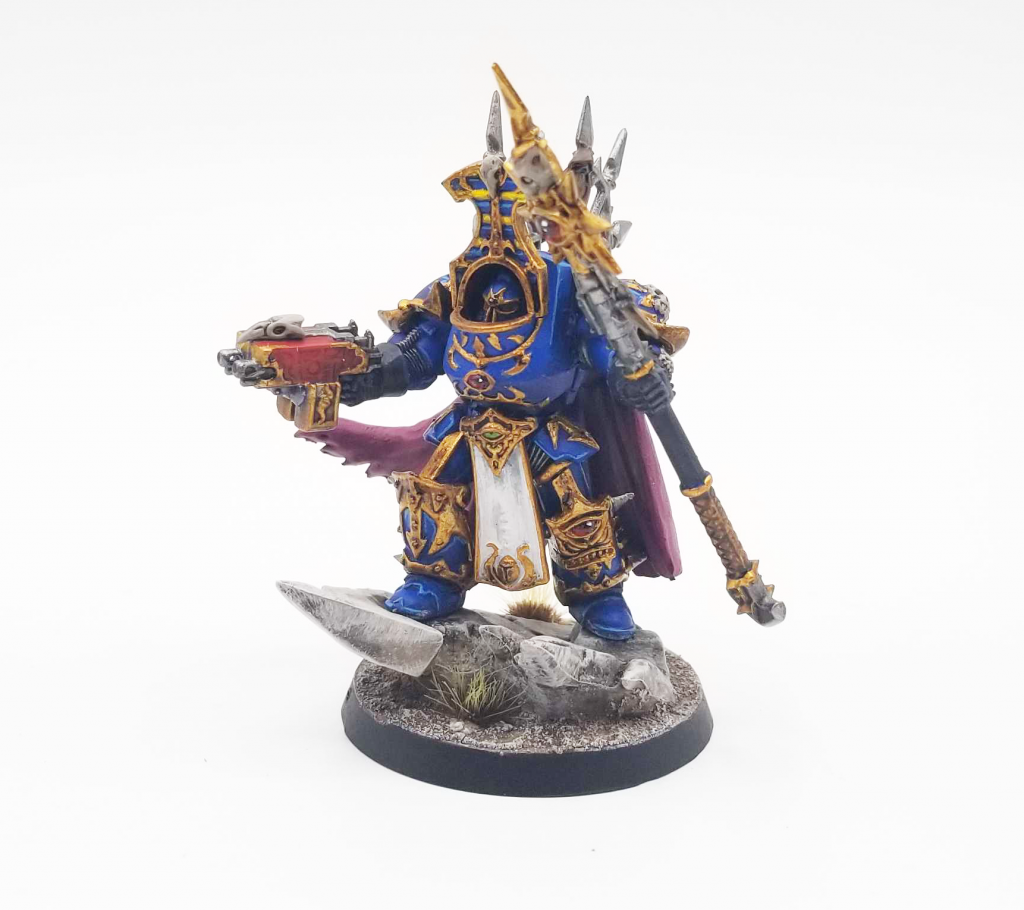
The more major change is the removal of the Morale phase. Instead, a Battle-shock test is taken at the start of the Command Phase if a unit is under half of starting strength. Starting strength is either the number of models in a unit, or the number of wounds on a model (for single model units).
The test itself is a 2D6 roll to beat the unit’s leadership value. If you roll above, you’re fine, but if you roll below then the unit is Battle-shocked. This is really bad (for the unit). It can’t be affected by Stratagems, its OC becomes 0, and if it falls back, you have to take something called a Desperate Escape test (which is probably also really bad).
Notably, this seems to affect pretty much everything in the entire game so far, from Termagants to Abaddon to Repulsors. We haven’t seen anything that’s immune to Battle-shock yet, so it’s clearly going to matter.
Building an army
Army Building
Power Level is now gone, it’s just points. Allies aren’t likely to be included, short of the general team-ups like Daemons, Knights and Brood Brothers. Instead of choosing a subfaction, you choose a detachment (explained below).
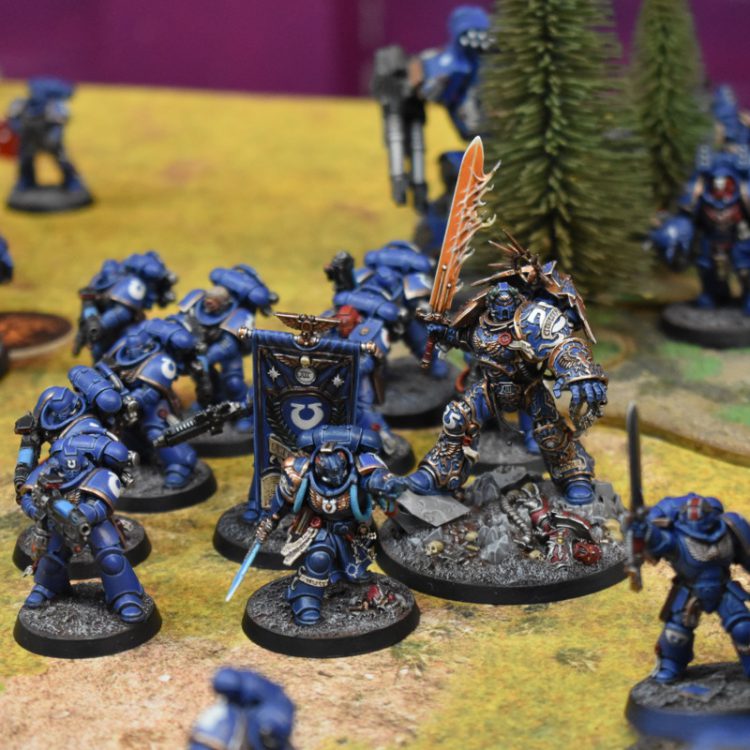
Army building rules are also extremely simple:
- 1+ Character
- 0-1 of each Epic Hero
- 0-3 copies of an individual datasheet.
- 0-6 copies of an individual battleline or dedicated transport datasheet.
One character becomes your Warlord, and that’s pretty much it. No more fussing with force organization charts or detachment types and CP modifiers.
Army Rules
These are rules that apply to your army no matter which detachment is picked. So far a faction seems to get one or two of these and they apply to the units in the army (rather than being tied just to the keyword of the faction). So for example, while Tyranids get SYNAPSE and SHADOW IN THE WARP, only certain units have these abilities on their unit cards, and need to be on the battlefield to allow the ability to be utilized.
Detachments
These are essentially sub-factions that you choose for your army. However, these aren’t like the subfactions in previous editions (Chapter, Hive Fleet, Craftworld, Dynasty etc) but they’re more ‘generic’. However, GW have mentioned there will be Detachments for certain Chapters, but you can just stick with the other detachments.
Anyway, a Detachment gives you another, unique army rule, up to 6 unique Stratagems to use and unique Enhancements. The model for this appears to be 9th edition’s Codex: World Eaters, which features two subfactions – World Eaters and Disciples of the Red Angel – which each have a different set of Stratagems and upgrades, though these feature 8 stratagems instead of 6. Still, based on what we’ve heard it seems like this is very close to what we should expect for 10th edition Detachments.
Stratagems
We’ve been informed that there are 12 Core Stratagems which every army has access to, and up to 6 Detachment Stratagems. It’s also implied that CP generation is going to be rather low, which means that Stratagems are likely to be 1 or 2 CP (notably the only 2 CP one we’ve seen so far has been a Space Marine stratagem for fighting on death).
We’ve only seen one Core Stratagem so far, which is Rapid Ingress, which allows a unit to arrive onto the board at the end of the opponent’s movement phase, as opposed to your own. We also expect the Command Re-roll to be back, but beyond that is anyone’s guess.
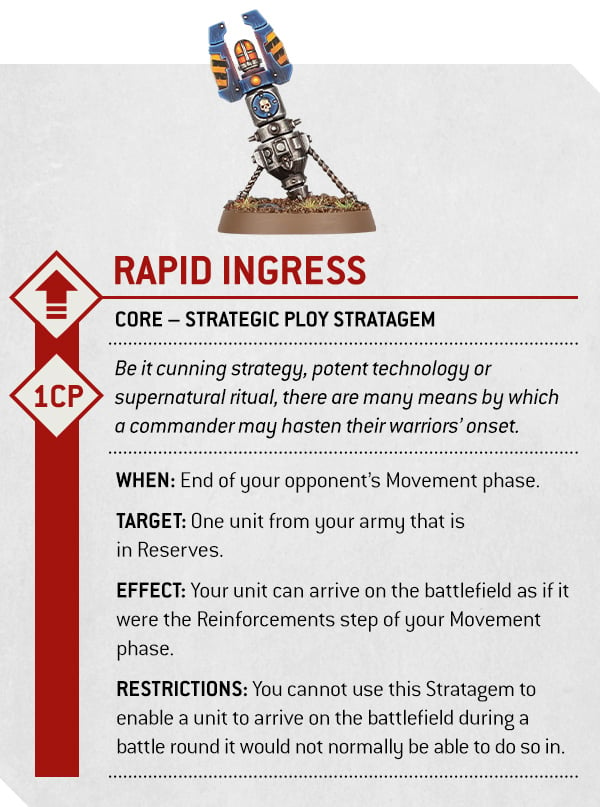
Either way, much like the Psychic changes, this seems like it will really reduce bookkeeping, and if the Core Stratagems are like the AoS Command Abilities, it will be very easy to remember and use them. We’re also big fans of the new layout, which makes it very clear when and how to use each Stratagem.
Playing the Game
Missions
Swiftblade: The new mission structure looks like it’ll combine the good parts of the current matched play structure with the Tempest of War mission format, with a few mix ups tossed in for good measure.
The new mission structure will focus around Chapter Approved Mission Decks. Like Tempest of War, you’ll use these decks to determine the deployment and objective layout, primary mission rules for scoring, and mission rules that add special rules to the mission. From there, there’s an attacker and defender deck for secondary missions, and gambits (more on that later!).
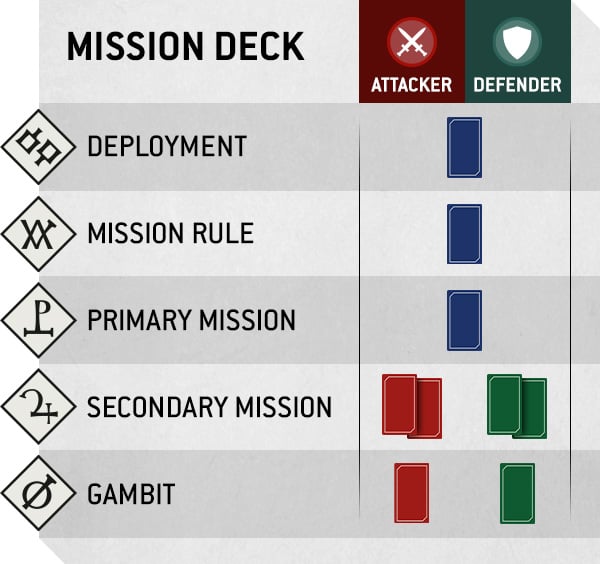
Scoring on primary looks to be capped out at 50 points, and scoring on the secondary missions is capped out at 40. After determining attacker and defender, but before deploying models, you declare your secondary missions. With the mission decks, you can either select Fixed Missions or Tactical Missions. Fixed Missions are similar to what we have now in the GT packs, where the player has seven different options to pick from and selects two secondary missions to remain in effect the whole game.
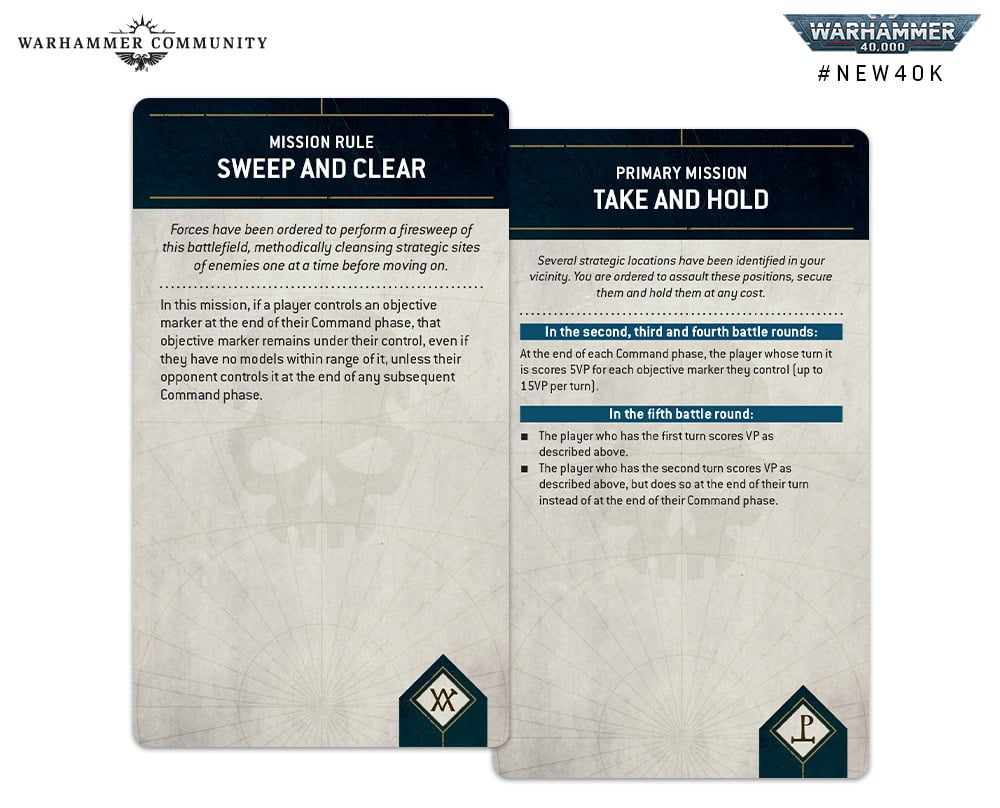
Tactical missions are more like tempest, where you start with two secondary missions at random and drawnew secondary missions when you complete them. You do have a stratagem to discard a secondary you don’t like in the command phase, and you can discard a secondary at the end of your turn to get extra CP. Tactical missions look like it’s playing 40K on bravery mode, where you risk more by having randomly generated secondaries for the promise of greater rewards of completing them, and rewards a well rounded army.
An interesting note is that the attacker and defender secondary missions are heavily implied to not be the same, so finally the attacker/defender role has more weight than “who has to deploy first”, which rocks. The secondary missions previewed so far also look to reward more active play and punish passive play, which rules. Hopefully most of the secondary missions are like this.
But what if you’re behind on primary scoring and need a miracle to win? That’s when the new Gambits come in.
Gambits
Gambits are an entirely new part of mission structure in the new Chapter Approved Mission Deck, designed to be a Hail Mary pass to try and win a game you normally wouldn’t be able to.
The way it works is each player has a gambit deck. At the end of the third battle round, either (or both!) players can elect to gambit. You shuffle your deck, draw three and discard one at random. You make sure to keep “Proceed as Planned” as one of the gambits available, and then select a gambit in secret. You and your opponent (if they decided to gambit) reveal your selections at the same time. If you select “Proceed as Planned”, nothing happens. Otherwise, your ability to score primary immediately ends and your primary goal is to complete the gambit you’ve selected.
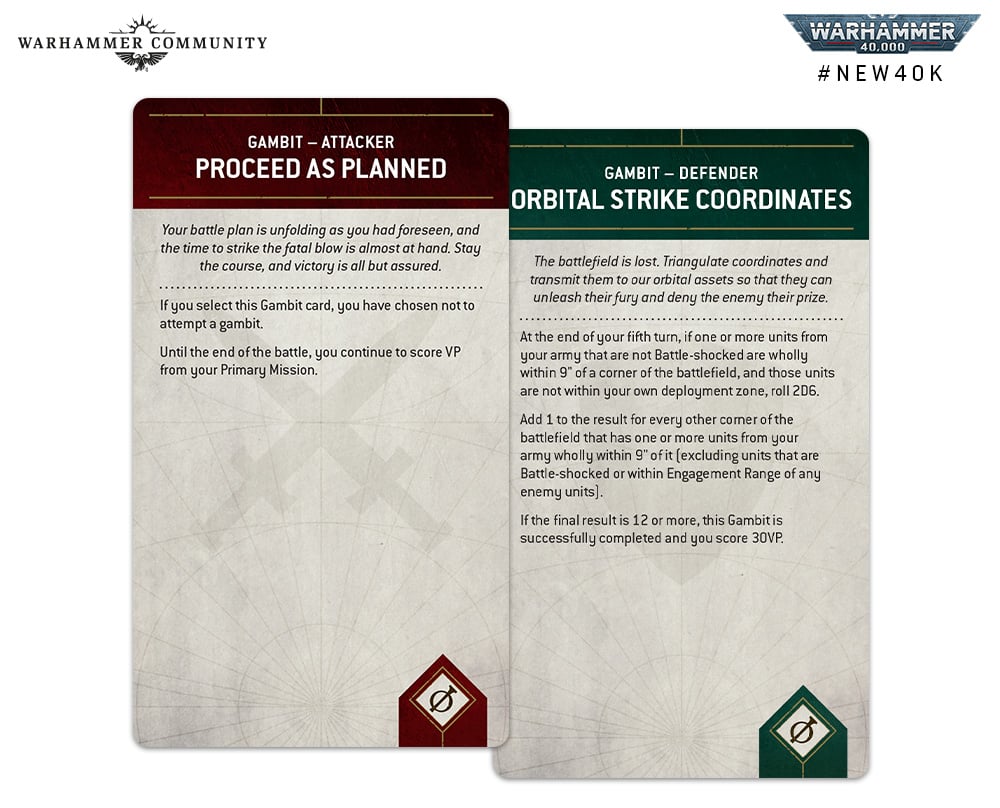
The risk is pretty big if you can’t score primary anymore once you start a gambit. But if you can successfully complete the Gambit, it’s 30 primary points.
I think this rocks. Realizing late game that you have no chance of winning a game of Warhammer sucks. With Gambits, you can try and make a big play to seize victory from the jaws of defeat. Additionally, your opponent will know your gambit plan, and can shift their game plan accordingly to make sure you can’t achieve it. Additionally, since you can’t score more than the 50 points allowed on primary with a gambit, your opponent could try and keep the score gap large enough that the gambit won’t matter. The one gambit we’ve seen looks like a very risky and exciting play, I can’t wait to see more of them.
Factions
Space Marines
Swiftblade: If you think of yourself as one of those kinds of dorks who like their superhuman soldiers in power armor to be “Loyal to the Emperor” or whatever, then there’s a lot to be hyped about from what we’ve seen so far. I GUESS.
Jokes aside, it’s looking like a good time to be a Space Marine player. There’s been a ton of new Space Marine stuff that Games Workshop has shown off for Space Marines, most of it stemming from the new Leviathan boxset. If you’d like to read more about the stuff from that box set, check out this round table article with the Goonhammer team HERE. For my own sanity, this bit will mostly cover the Faction Focus article released for Space Marines, with a few extra bits for the faction taken from other articles on Warcom.
Firstly, Oaths of Moment is the Space Marine army rule and it’s as potent as it is simple.

I’ve already seen a lot of buzz around this, and for good reason. Anyone who’s spent much time in ninth edition 40k knows the strength of full re-rolls, and having reliable access to it for Marines, even if it’s only on one target at a time, is great. It means that whatever you target for oaths is likely going to have a very bad day, so opponents are going to need to be super careful about making sure they don’t let their key units get set up to be lit up by a barrage of oaths re-rolls.
The Space Marines at launch will be getting a detachment called Strike Force Gladius, and the detachment rule to go with it is the brand new version of Combat Doctrines for tenth edition. Notably, combat doctrines no longer affects the AP of weapons depending on the turn, but allows for one of three army wide abilities to be chosen during the command phase:
- Devastator Doctrine: Advance and Shoot
- Tactical Doctrine: Unit that falls back is eligible to shoot and charge
- Assault Doctrine Advance and charge
I like this much more from a fluff and gameplay perspective over the previous way doctrines worked. If you want to make a rule that emphasizes the tactical flexibility of the Adeptus Astartes, this is it. It takes a little bit of planning to pull off, but using these abilities well will be a big deal.
Next, we get to look at a very cool new datasheet, because it gives me a little bit of insight about what the Chaos version might look like: the Land Raider. Its degradation on losing wounds is far less brutal than before, it’s jumped up to toughness 12, and as mentioned briefly earlier in the article it gained the Assault Ramp rule that lets units get out, move and charge after the Land Raider has moved. That’s a big threat extension for any unit that can fit in one, which is good news for Primaris marines as it looks like they will finally be allowed on the party bus.
The faction focus article also gives us a look at Roboute Guilliman, and he’s finally got a datasheet worthy of a Primarch.
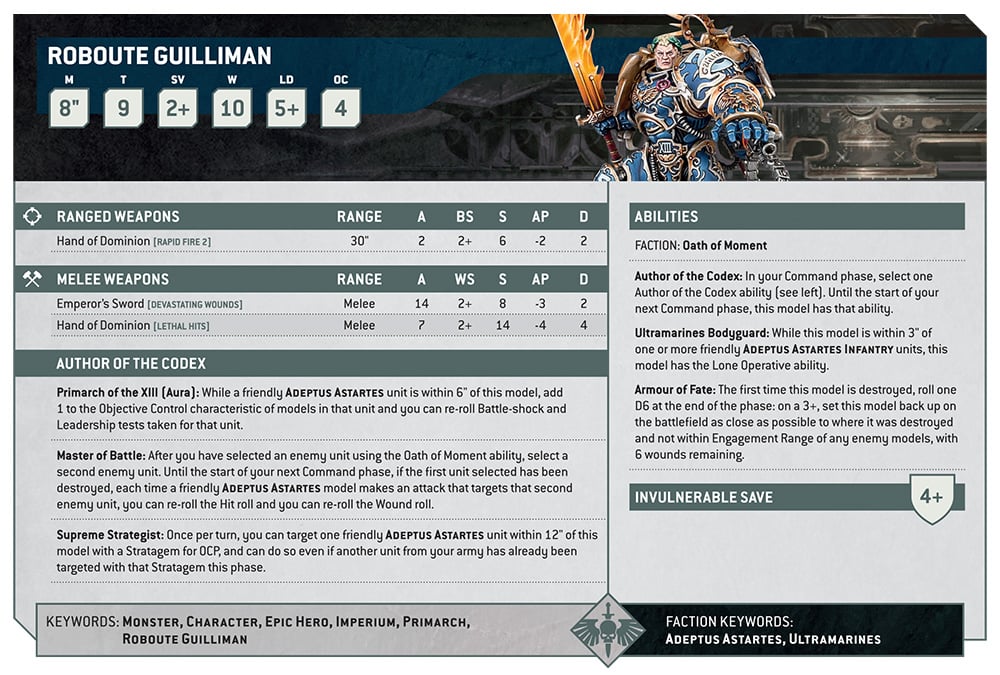
Offensively he’s very nasty, but his Author of the Codex ability is the real draw of the datasheet. Master of Battle looks like the clear winner here, to the degree that I admit that having two possible oaths targets a turn might be a bit much, but Primarch of the XIII and Supreme Strategist are also very strong abilities. If G-man had all three all the time, his datasheet would be deep into “problematic” territory, but the fact he can only have one active at a time is interesting. Vashtorr’s abilities are like this, as well as Angron’s, so I suspect that the theme of “multiple strong buff abilities, but only one at a time” will be the new normal for these epic hero characters.
We see some weapons updates too, as well as new stratagems. It looks like the Heavy Onslaught Cannon for the Redemptor picked up devastating wounds, but lost a point of AP in the process. We also get a peak at the Heavy Laser Destroyer for the Repulsor Executioner, which should be good for dealing with heavy armor with its Strength 16 shots at D6+4 damage.

The two Space Marine stratagems we’ve seen are Armour of Contempt and Only in Death does Duty End. Armour of Contempt is pretty straightforward, and lets you worsen the AP value of incoming attacks by 1 when that unit is targeted by enemy shooting or melee. Only in Death does Duty End gives Space Marines the ability to fight on death if they haven’t fought yet, an excellent tool to make sure your important trade pieces can still do their thing before they get taken off the table.
The theme for Space Marines so far seems to be tactical flexibility, which I dig. Space Marines function best when they get to be a toolbox army, and we’ve already seen that they’ll get some great tools going into tenth.
Tyranids
Tyranids get two Army Rules, both centred around the new Battle-shock mechanic. The first of these is SYNAPSE, which allows any units within 6” of a unit with the SYNAPSE keyword (not the core rule!) to take Battle-shock tests on 3D6 instead of 2D6. Here’s a little table showing off the chance of passing Battle-shock tests on 2D6 and 3D6
| Chance of Passing | ||
| Leadership | 2D6 | 3D6 |
| 3+ | 97% | 100% |
| 4+ | 92% | 100% |
| 5+ | 83% | 98% |
| 6+ | 72% | 95% |
| 7+ | 58% | 91% |
| 8+ | 42% | 84% |
| 9+ | 28% | 74% |
| 10+ | 17% | 63% |
| 11+ | 8% | 50% |
| 12+ | 3% | 38% |
As pretty obviously shown, this dramatically increases your odds of passing Battle-shock tests.
Speaking of Battle-shock tests, the other Army Rule they get is called SHADOW IN THE WARP, this one is pretty simple. Once per battle, if you have a unit with this rule on the battlefield, you can force every enemy unit on the battlefield to take a Battle-shock test. This is really, really good, with leadership being lowered across the board (and with vehicles having to take Battle-shock as well), you can completely cripple an army for a turn.
Both these rules are pretty thematic as well, since they can be turned off by just destroying the big monsters and support creatures that are generating the rules, leaving the Tyranids in a rather tricky situation.
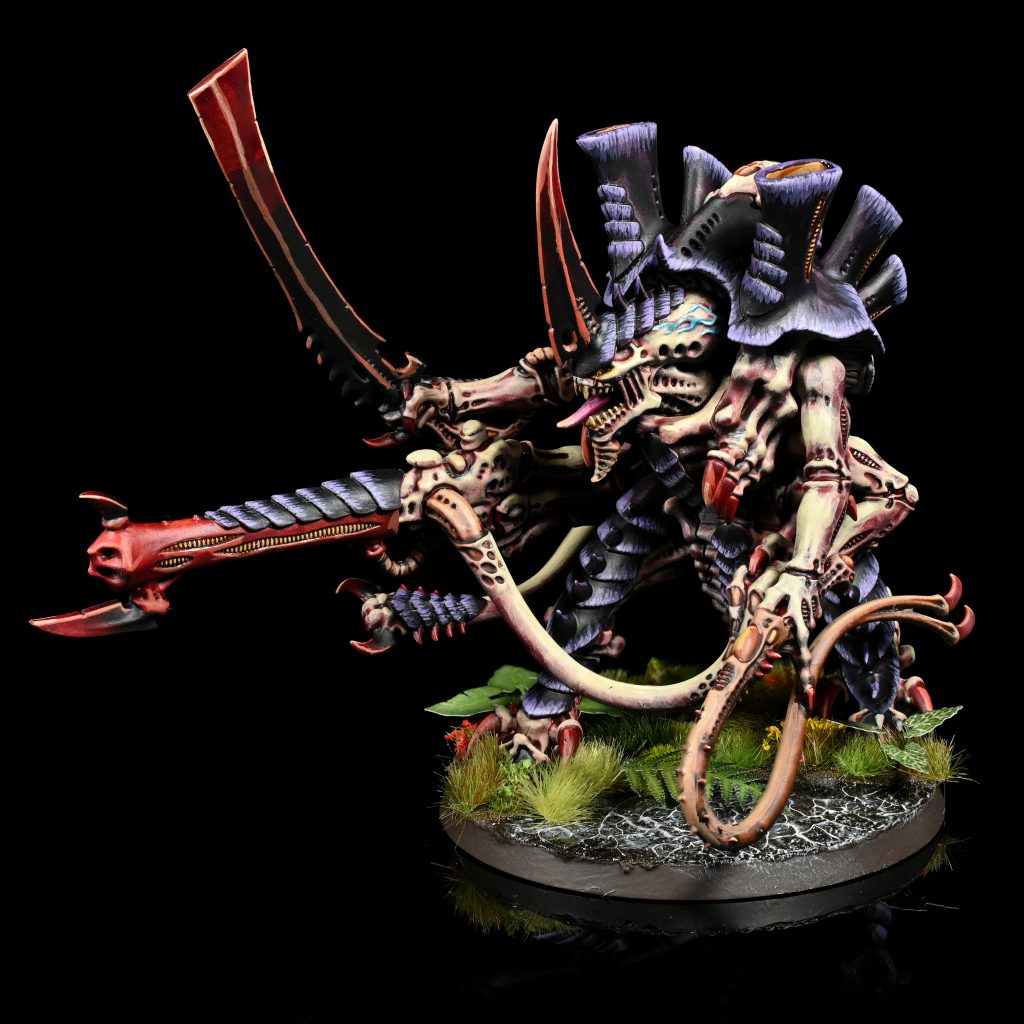
The Detachment Rule we’ve seen at this point is called HYPER-ADAPTATIONS, at the start of the game, you give your Tyranids one of the following rules:
- SUSTAINED HITS 1 against INFANTRY and SWARM units
- LETHAL HITS against MONSTERS or VEHICLES
- PRECISION for CRITICAL HITS against CHARACTERS
The first two of these are nice bonuses or a really nice boost against more skew heavy lists (extra attacks vs infantry or auto-wounding vehicles are such succinct ways to deal with those two things it kind of feels intentional). We don’t know what PRECISION does yet, but it’s not likely to be bad.
The Stratagem we’ve seen allows you to return D3 + 3 models to either two units with the Endless Multitude keyword within SYNAPSE range, or one that isn’t. Units with this keyword include, but are not limited to Hormagaunts, Termagants, Gargoyles and Neurogaunts. Getting to return somewhere between 4-12 models could be really useful for holding objectives, movement shenanigans, helping out a tarpit or adding some much needed firepower.
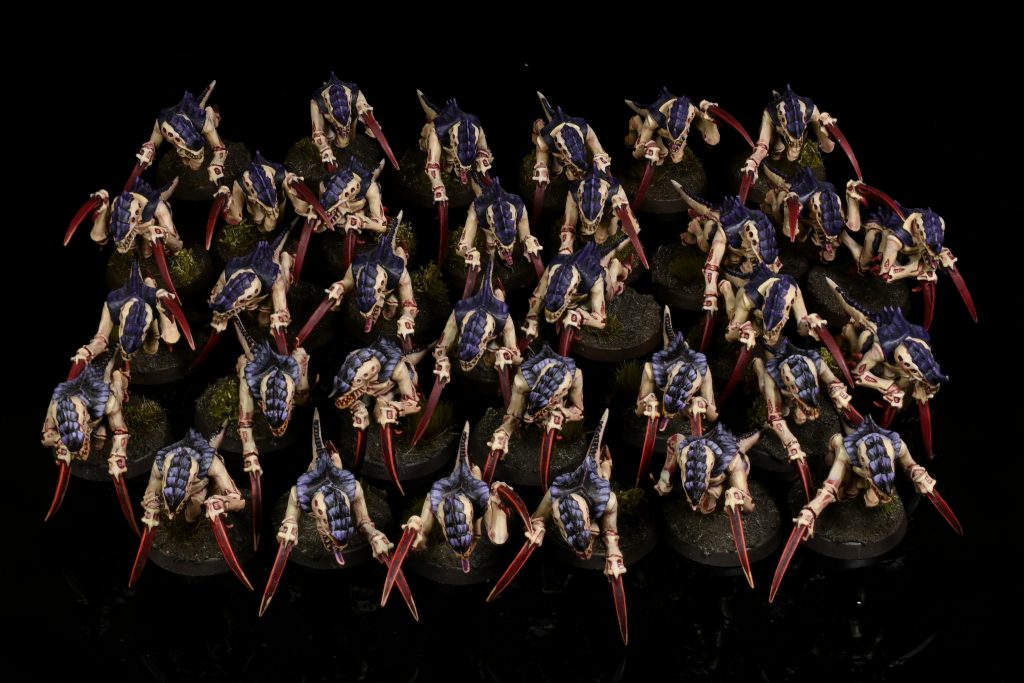
While there’s been a bunch of new units shown off in the Leviathan boxset, which you can read about HERE, we’re going to focus on what’s changed.
Genestealers lose their ability to deploy pretty far forward, but as compensation, they just get a free 8” move when the game starts. They can also re-roll 1s to wound, and get full re-rolls to wound if in range of an objective.
The Swarmlord has got a glow-up, with more wounds and toughness. Its psychic power is a 2 damage D6+3 hit flamer, and its bone sabres can re-roll wounds. The real fun is in the abilities though. Firstly, once per battle, after an opponent uses a stratagem, you can just increase its cost by 1CP for the rest of the game, which sounds extremely powerful. And then, to continue the theme of CP bullying, you gain 1 extra CP during your Command Phase.
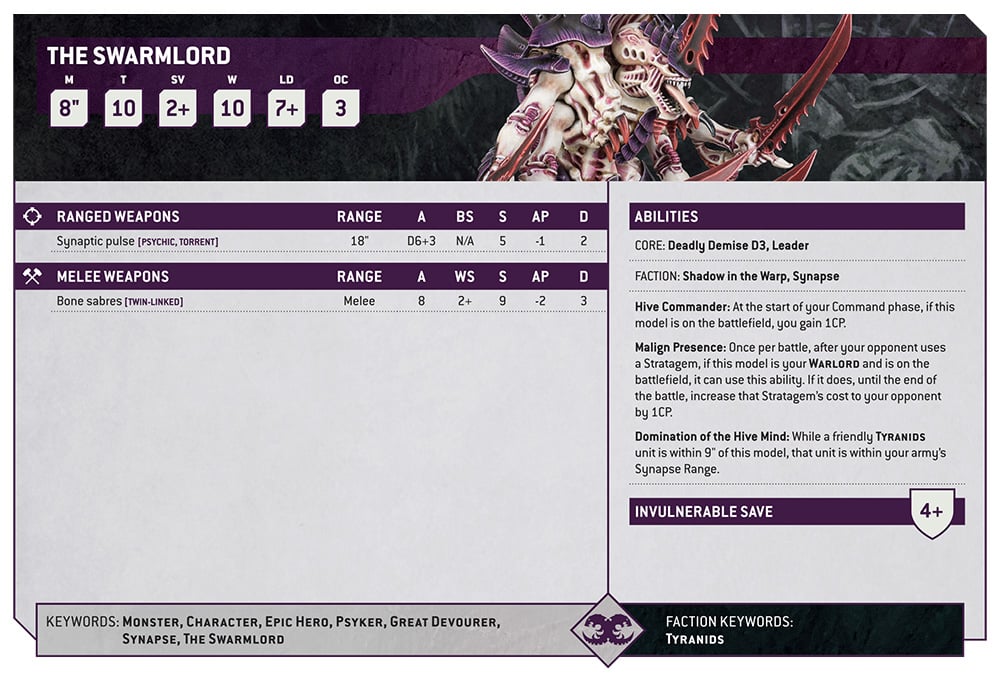
Finally, the Rupture Cannon has one less shot, but it hits on 2s if the Tyrannofex doesn’t move, has way more strength, and does more potential damage.
Chaos Space Marines
Swiftblade: Y’all. I’ve been popping champagne bottles for days now after seeing the Chaos Marine rules previews on Warcom. These new rules from the preview rock.
Firstly, we have our new Army Rule: Dark Pacts. With Dark Pacts, you can select a unit when they shoot or fight and give them Lethal Hits or Sustained Hits 1. After attacks are resolved, they make a battleshock test, if they fail the unit takes D3 mortal wounds. This is not only a very strong rule to push damage at key moments, but also nice and fluffy as Chaos Marines beseeching the dark gods for power and sometimes getting more than they bargained for is the go-to Chaos Marine trope. Plus, the mortals won’t be too punishing on a faction with traditionally good leadership.

Next, we see some datasheets, and the Legionary datasheet starts us off real strong.
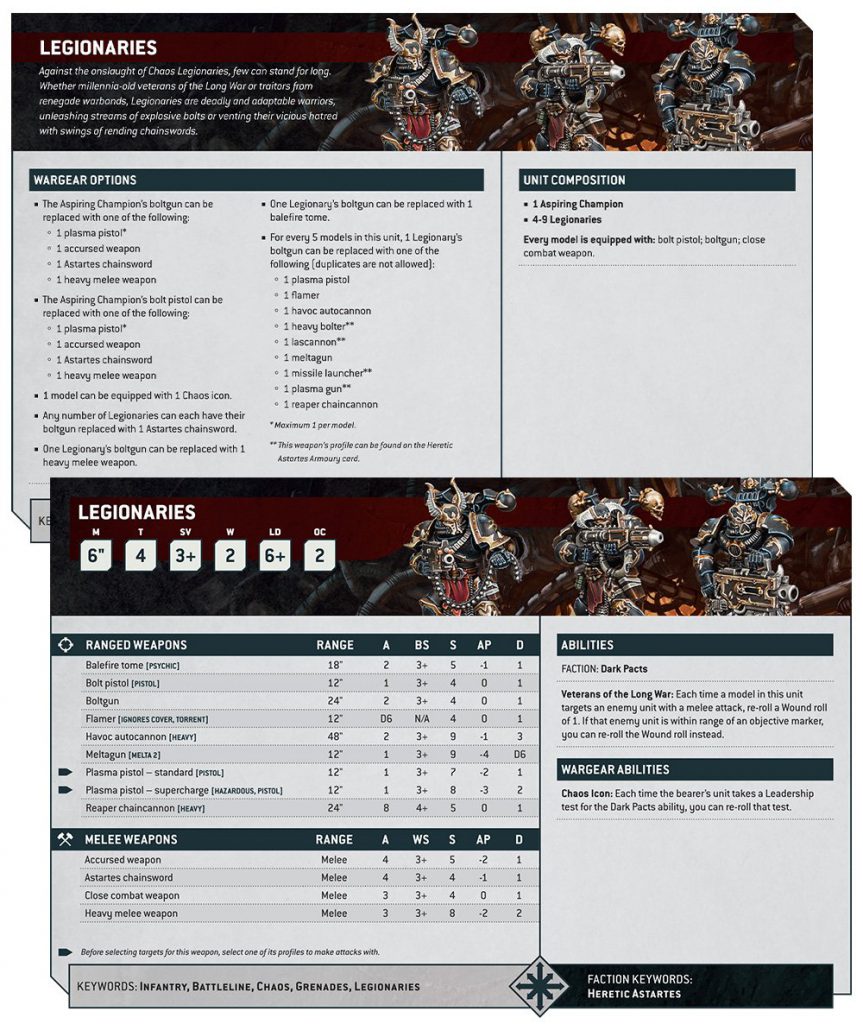
What a thing of beauty. Legionaries look like they will have lots of very flexible Wargear options, and hit hard enough to trade really well into units on objectives with the new Veterans of the Long War ability. Especially when the squad has a Chaos Icon and can reroll failed leadership checks on Dark Pacts. A slam dunk datasheet, I love looking at it.
Next, we get to see the datasheet for the baddest man in the 41st Millenium: Abaddon the Despoiler. I hope you’re sitting down, my friends in Chaos.
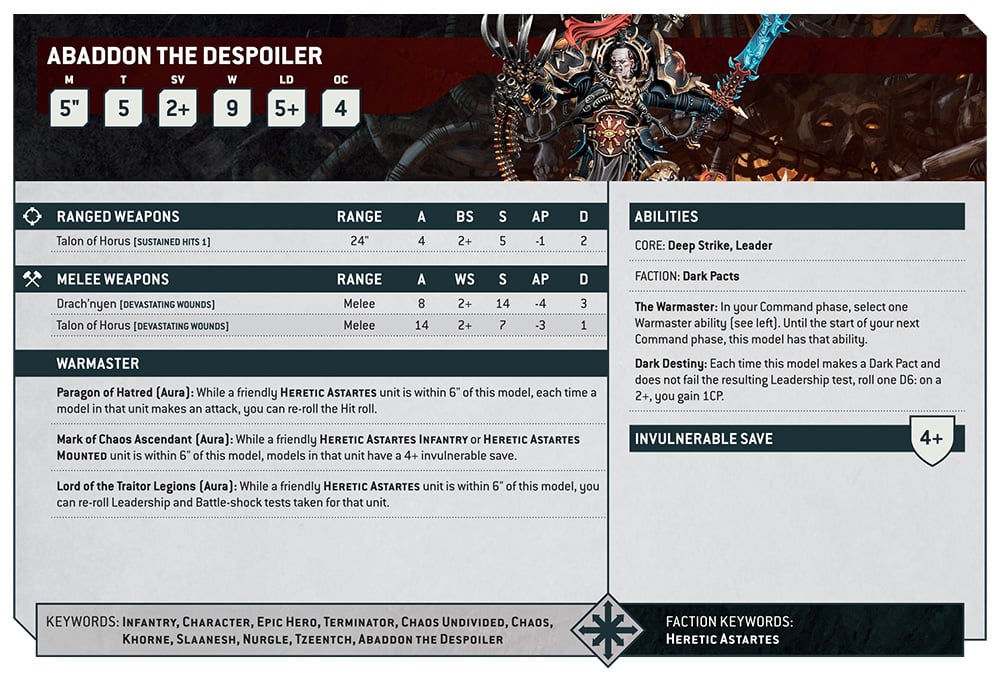
Spicy.
In an edition with less auras, Abaddon has three excellent auras to choose from each command phase, and still hits like a runaway train. Plus, he has the leader ability, so a unit of Terminators can keep him safe as he advances up the table or deep strikes into enemy lines. Amazing, no notes.
Oh, and he generates CP for me too. What’s not to love?
Next, we see an update to the Baleflamer and the Fleshmetal Guns on the Obliterators.

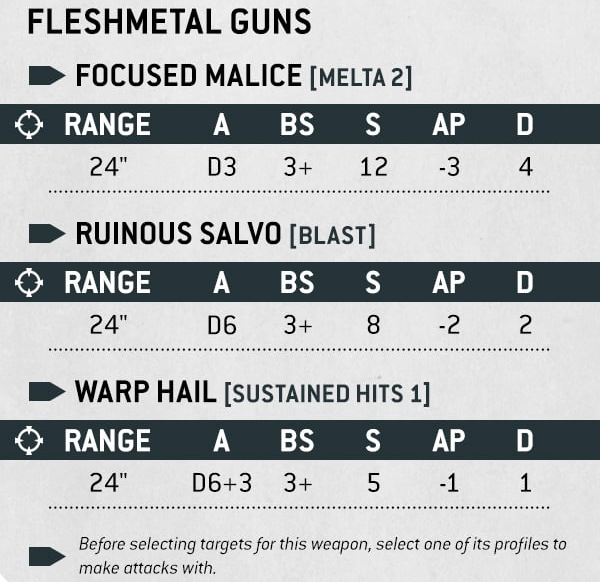
The Baleflamer is a little less interesting here for changes, since its profile is pretty similar to its current iteration. The Fleshmetal guns are interesting though. We still have random numbers of shots, which is a bummer, but each weapon picks up a special rule to make these guns worth thinking about. Especially now that I can add sustained hits 1 to a weapon almost anytime, the Str 12 damage 4 shots from focused malice may be an excellent anti-tank option. Especially since the squad can get some sustained hits action on their shooting.
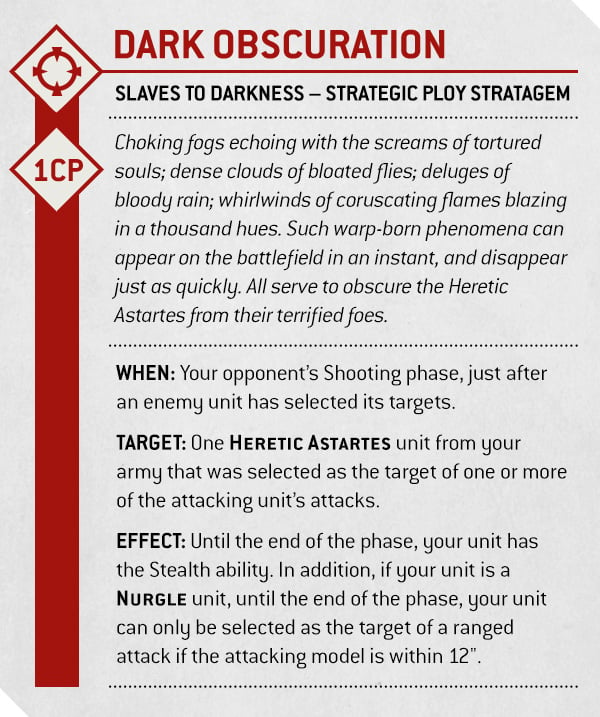
Finally, we have a stratagem that gives us a small peek into the Slaves to Darkness detachment. This stratagem, Dark Obfuscation, gives a unit stealth when they are targeted by shooting, and makes the unit unable to be selected if they have the Nurgle keyword.
We don’t know yet what stealth does, nor how a unit becomes a Nurgle unit, but for 1CP this is a very strong stratagem, especially in Chaos Marines with a lot of elite infantry trying to run across the table.
All in all, it looks like there’s exciting things happening for Chaos Space Marines. I hope that my excitement for what’s to come doesn’t age like milk, but from just this glimpse of the faction in this preview article Chaos Space Marines seem like a blast to play. I want to get my hands on these new rules right now. Better start painting more Legionaries!
Necrons
The Army Rule for Necrons is Resurrection Protocols. This allows you to restore D3 wounds (or models worth D3 wounds) to every unit in your army at the end of each of your Command Phase. So on average, everything will restore 10 wounds, which incidentally is the half of the Monolith’s wounds. Necron Warriors can restore D6 wounds using this, or D3+3 if they’re contesting an objective, I’m very happy for them.
The Detachment Rule we’ve seen for them is Command Protocols, which gives every unit led by a Necron character +1 to hit, which is great for your big blocks of Warriors that are hitting on 4s normally.
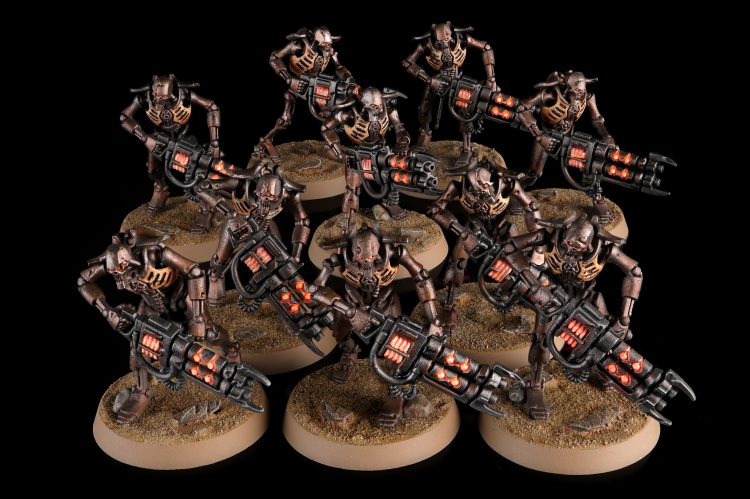
The Stratagem we’ve seen gives a unit +1 Strength to their melee weapons, and if being led by a character, an extra point of AP. It feels like this detachment really, really wants you to have characters in your units.
Updated units shown off include the Monolith, which has less wounds, but way more toughness and will also be restoring, on average, twice as many wounds per game. The guns have also all received pretty neat upgrades.
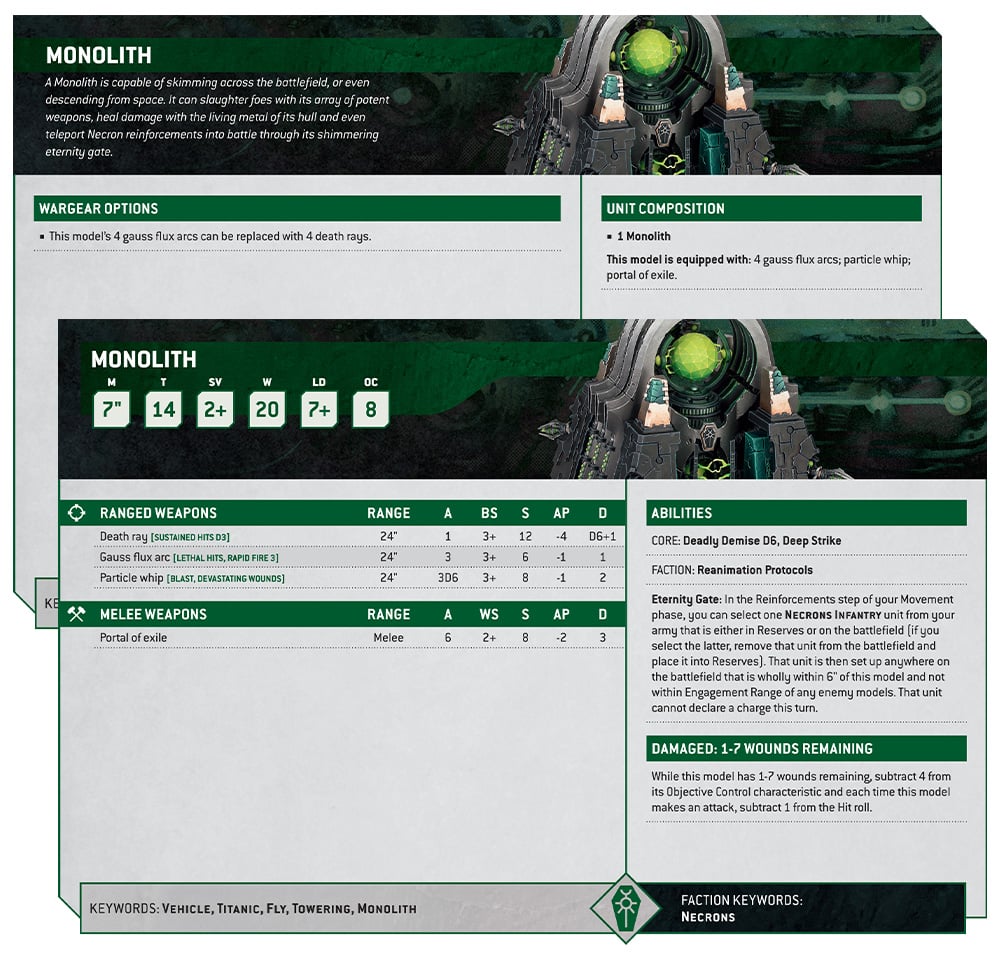
Warriors rather helpfully show off the fact that Gauss Weaponry now has the LETHAL HITS ability baked into it, meaning your Critical Hits automatically wound. This used to be a Stratagem, so that’s a welcome change.
Finally, we’ve seen the weapons for the Void Dragon (which does an absolute number on vehicles and infantry), and the Doomsday Ark (which does an absolute number on anything, especially if it doesn’t move and gets the DEVASTATING WOUNDS ability).
Next Week: More Coverage
That’s everything for what we’ve seen of 10th Edition so far. We’ll be back this time next week to go over the reveals and what we’ve learned. In the meantime, drop your questions or comments in the comments section below or email us at contact@goonhammer.com.

